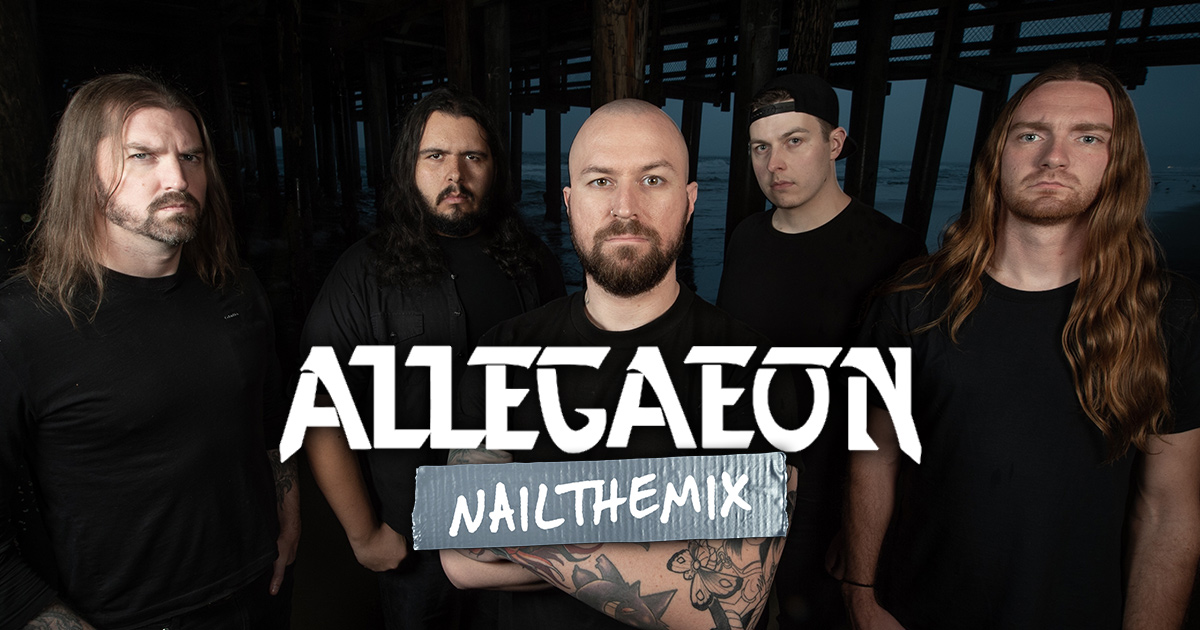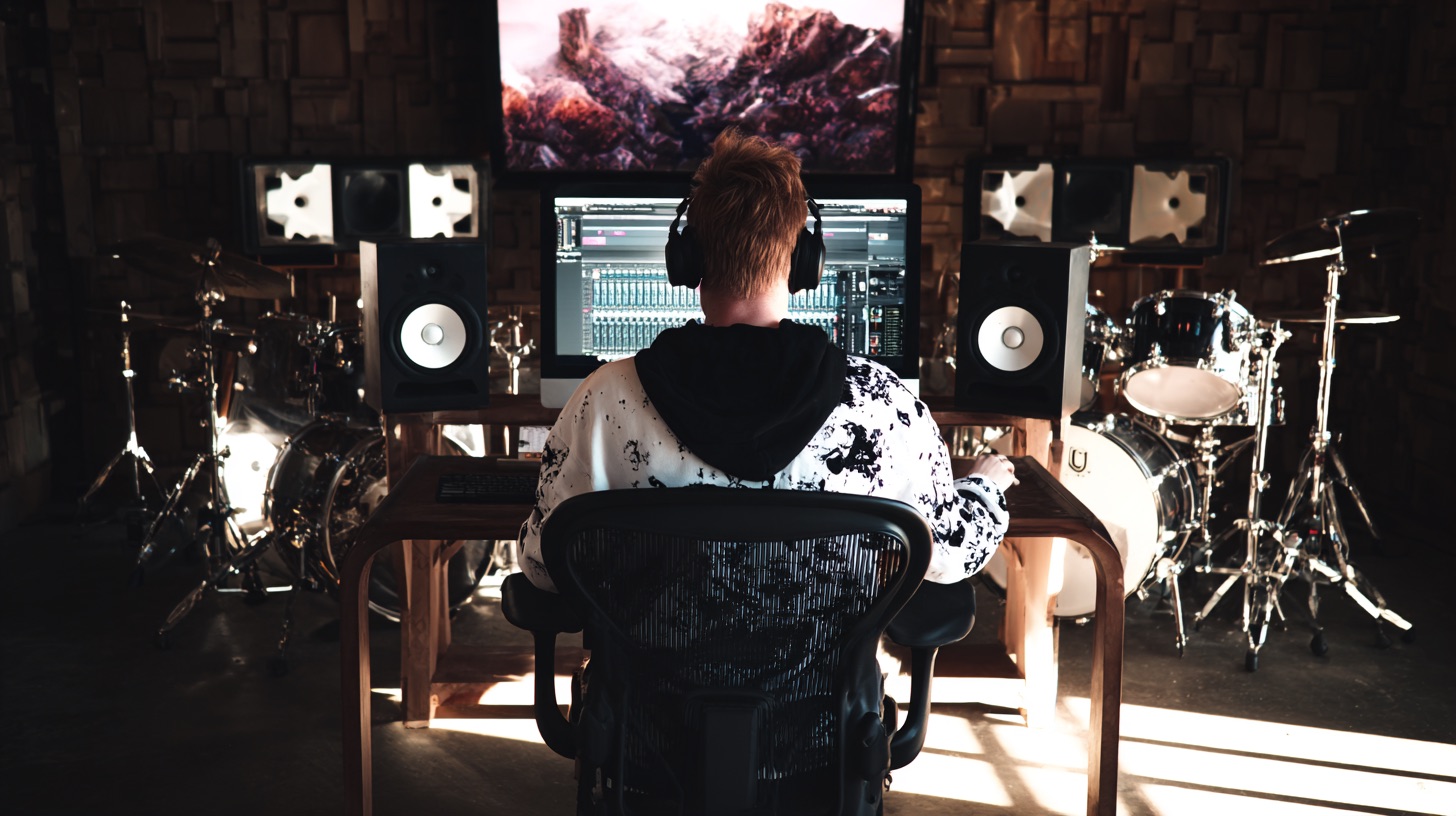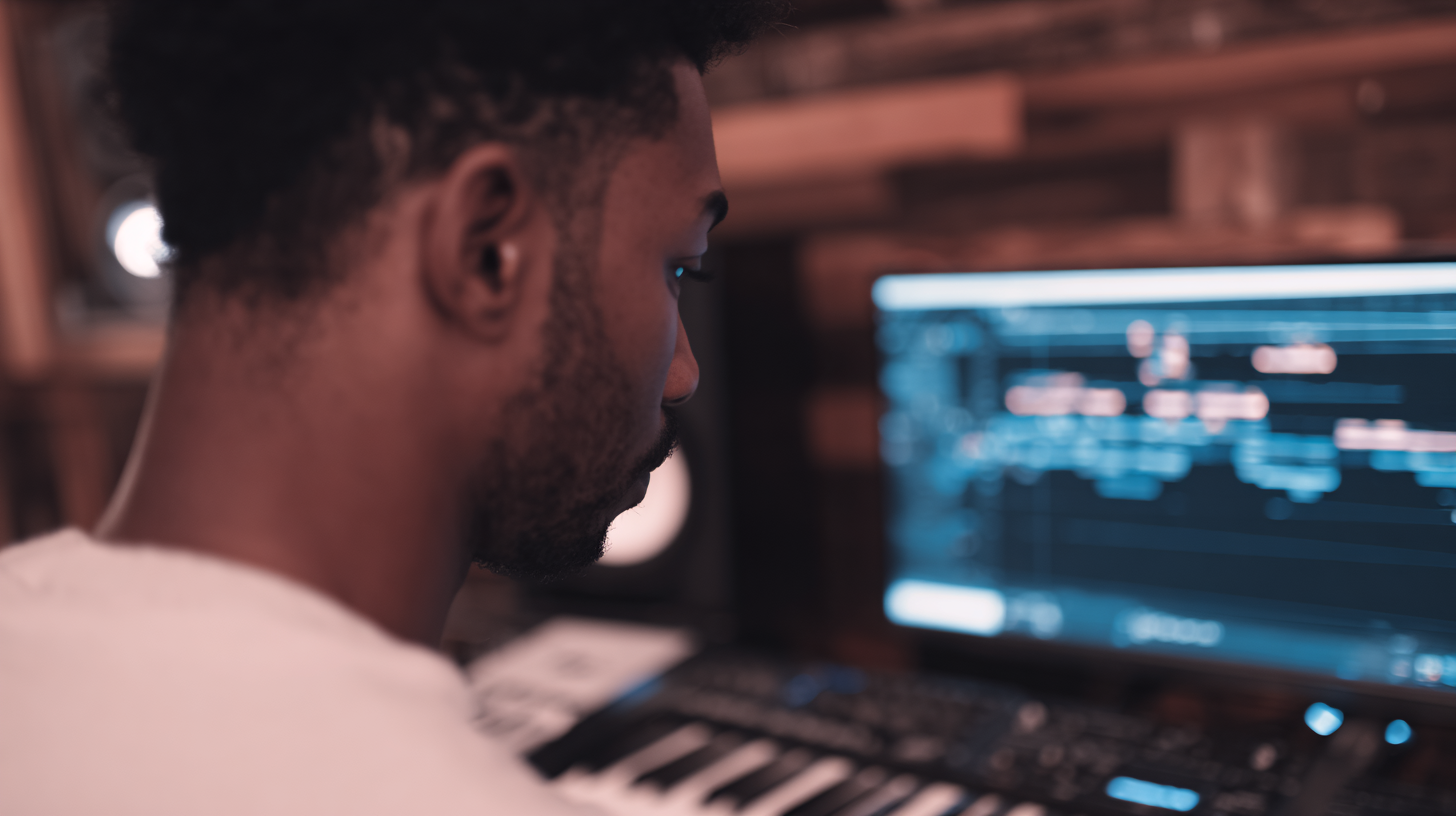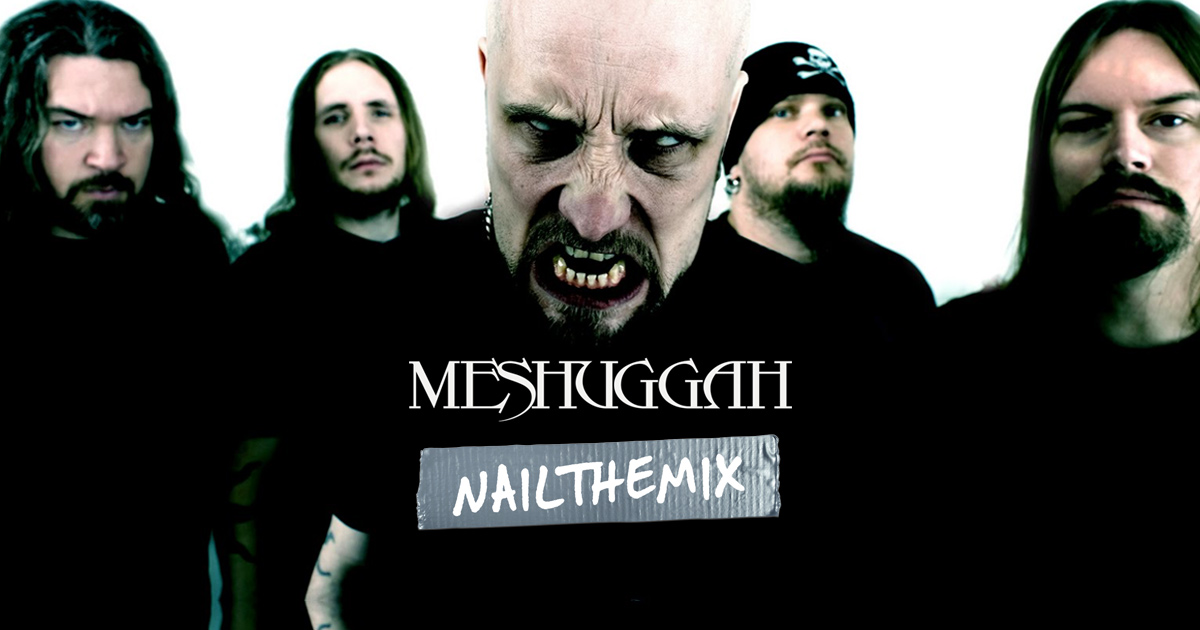
Dave Otero’s Mix Bus Tricks for Mixing Allegaeon
Nail The Mix Staff
Getting a mix 90% of the way there is one thing. But that final 10%? That’s where the magic on the mix bus happens. It’s the processing that takes a collection of great-sounding tracks and glues them into a cohesive, powerful, and professional-sounding record.
In a session with us, legendary producer Dave Otero (Cattle Decapitation, Archspire) walked us through the mix of “Of Beasts and Worms” by Allegaeon, and he dropped some serious knowledge on how he builds his mix bus chain. Unlike a “top-down” approach where the bus processing is on from the start, Dave builds his mix first and then adds in his chain to enhance what’s already there. Let’s break down his step-by-step process.
Taming Harshness with Dynamic EQ
Once the main elements of the mix are balanced, Dave’s first move is to add some subtle control using a dynamic resonance suppressor. In this case, he reaches for a favorite, which he calls “Gofo” (soothe2).
Instead of a static EQ that cuts frequencies permanently, this kind of plugin intelligently listens to the mix and dips harsh, resonant frequencies only when they poke out. This is a game-changer for taming cymbal fizz or aggressive guitar frequencies without making the whole mix sound dull.
Dave starts with a default preset, dialing in a low amount of “recover” and “tame,” then pulls back the “brighten” control and the high-pass filter. The goal isn’t to do major surgery. In fact, he uses it as a diagnostic tool. While listening to a lead guitar part, he noticed the plugin was working overtime to tame its abrasive character. That’s a clear signal: don’t rely on the mix bus to fix a problem at the source. He quickly jumped back to the individual guitar track’s EQ to clean it up before it even hit the bus.
Adding Weight and Saturation with Tape
Next up is the Slate Digital Virtual Tape Machine (VTM). This isn’t just about adding some vintage vibe; it’s a crucial tool for shaping the low end and adding harmonic saturation that helps glue the mix together.
Dave’s approach is straightforward but effective:
- Mode: He switches it to the “2 Track / 1/2 inch” mode, which has a distinct character compared to the multitrack setting.
- Input Gain: He’s not shy here, pushing the input gain almost all the way up. This drives the “tape” hard, generating rich saturation that can help thicken the low-end and smooth out the top-end in a really pleasing way.
This move shows that as long as you use your ears, leaning on powerful saturation plugins can become a core part of your sound, providing warmth and cohesion that’s tough to get otherwise.
The Critical EQ and Compressor Relationship
This is where things get really interesting. Dave’s chain includes both EQ and compression, but their order is a critical decision. He uses a FabFilter Pro-Q 3 for equalization and a Slate Digital VBC G-Comp for that classic SSL-style glue.
Here’s his process for finding the sweet spot:
- Initial Placement: He starts with the Pro-Q 3 after the compressor, just to hear its effect on the compressed signal.
- The Test: He then moves the EQ to be before the compressor in the chain.
- The Verdict: The difference is immediate. Placing the EQ before the compressor cleans up the signal before it gets squeezed. This means the compressor isn’t reacting to problematic low-mids or unnecessary sub frequencies. Instead, it’s reacting to a more balanced, musical signal, allowing it to work more effectively and transparently.
After getting the EQ and other plugins in place, he realizes he’s not hitting the G-Comp as hard as he’d like. In a key move, he goes back to the very first plugin on his chain and pushes the input trim. This drives the entire chain harder, getting his mix bus compressor to clamp down and provide that perfect pumping, cohesive energy.
Final Polish: Multiband Widening and Limiting
With the core of the bus processing dialed in, it’s time for the final mastering-style moves using iZotope Ozone. This is where he adds width and brings the track up to a competitive commercial volume.
Strategic Stereo Widening
Dave uses the Ozone Imager module in four-band mode for precise control over the stereo field:
- Below 80Hz: All mono. He pulls the width down to -100, creating a rock-solid, centered low-end that will translate everywhere.
- 80Hz – 600Hz: He leaves this range completely alone. He notes that messing with stereo width in the low-mids can cause phasing issues, especially for vinyl pressing. It’s a pro tip that can save you major headaches later.
- Mids & Highs: He adds a subtle +10 width to the two upper bands. This isn’t about creating a fake, ultra-wide mix. It’s a gentle touch that helps the guitars and cymbals poke out of the speakers just a bit more, creating a sense of space and opening up the entire mix.
Pushing for Loudness
For the final limiting, Dave uses the Ozone Maximizer with some go-to settings:
- Algorithm: IRC III in “Balanced” mode is his starting point.
- Stereo Independence: Set to 50%, this allows the left and right channels to be processed slightly differently, enhancing stereo movement.
- Transient Emphasis: Also at 50%, this feature works to preserve the punch and impact of drums even while the overall level is being pushed.
From there, it’s all about pulling down the threshold until the mix is hitting the desired loudness, constantly A/B referencing against other commercial tracks to make sure it stands up.
Learn The Process Behind The Pros
Building a powerful mix bus chain like this involves a series of deliberate, interconnected decisions. It’s about more than just presets; it’s about understanding how each processor affects the next and how to tweak them to serve the song. These choices are exactly what separates a decent mix from a professional one.
Allegaeon on Nail The Mix
Dave Otero mixes "Roundabout"
Get the Session
Want to see how pros like Dave Otero make these calls in real time? With Nail The Mix, you can. Every month, you’ll get the raw multitracks from a massive song and watch the original producer mix it from scratch, explaining every single plugin, setting, and strategy along the way. Stop guessing and start learning the tried-and-true techniques that go into making world-class metal records.
You can see Dave’s entire process on this Allegaeon track right here. Learn how to move from presets to a truly pro sound with our guide to Mixing Modern Metal Beyond Presets.







